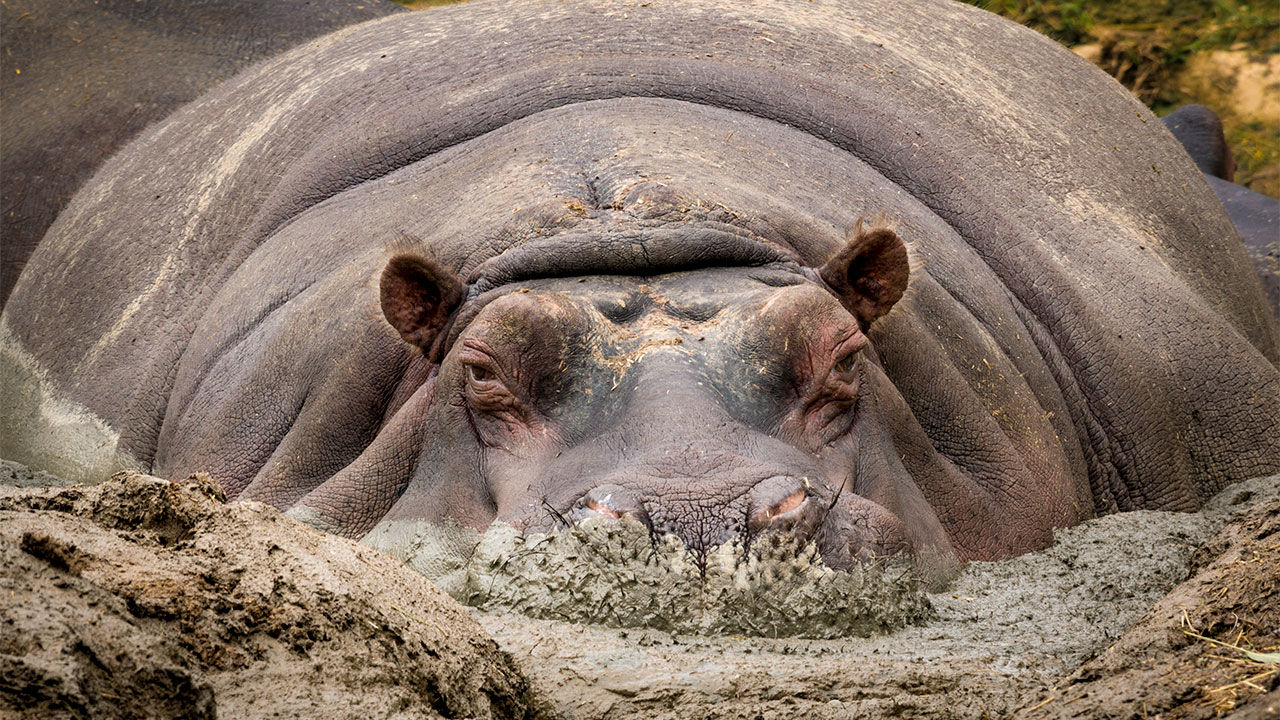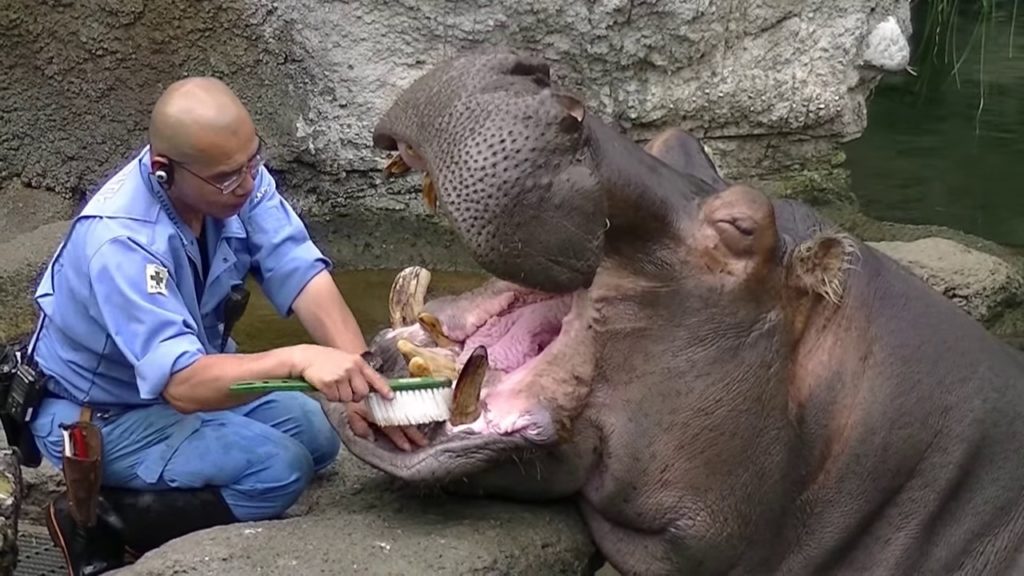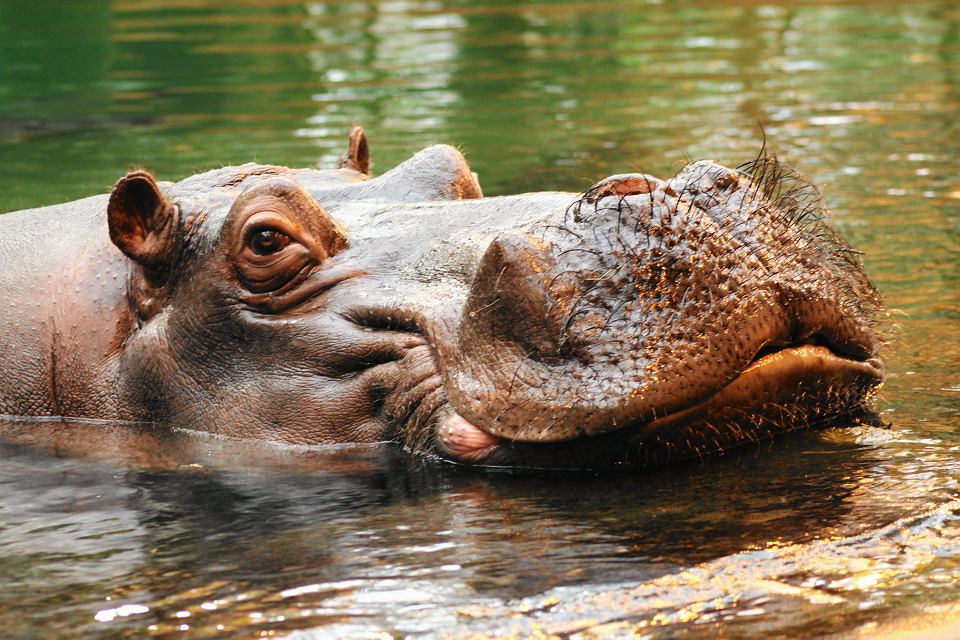The hippopotamus, also called: hippo, common hippopotamus or river hippopotamus is a large cloven-hoofed mammals belonging to the hippopotamus family. The name comes from the ancient Greek for “river horse”.

Native to sub-Saharan Africa, Hippos inhabit rivers, lakes, and mangrove swamps, where territorial males preside over a stretch of river and groups of five to thirty females and young hippos. During the day, they remain cool by staying in the water or mud; reproduction and childbirth both occur in water. They emerge at dusk to graze on grasses. While hippos rest near each other in the water, grazing is a solitary activity and hippos are not territorial on land. The hippo is among the most dangerous animals in the world due to its extremely aggressive and unpredictable nature. They are threatened by habitat loss and poaching for their meat and ivory canine teeth.
The first hippo was described by Linnaeus in 1758.
The scientific name is Hippopotamus.
What is the most dangerous African animal? The answer is not as obvious as it may seem. Because it is not a poisonous spider, a venomous snake, or a predatory lion. The most dangerous animal on the African continent is … the hippo.
Unremarkable only in appearance
Characteristic barrel-shaped body, short legs, and a large head – although the hippo looks quite nice, it can be extremely dangerous. It is little known that herbivores can kill humans. Why should an animal attack people if it does not eat meat?
One only needs to look at the hippo’s physiognomy to understand why it is such a fearsome animal. An adult male hippo can be up to 11 to 17 feet tall. The body weight of this giant is even 4000 pounds. In terms of size, it is equal to rhinoceros, second only to elephants.
Besides, hippos, although they are herbivores, have a dangerous weapon – long fangs with which they can inflict deep wounds. Its twisted incisors are razor sharp and can be up to 60 cm long. To make matters worse, the hippo can open its mouth so wide that the jaws form an angle of 150 degrees. Thanks to that, they can crush the boat or cut the canoe in half without much effort. The animal can kill a crocodile with one move of its jaw, so it is easy to imagine what such an aggressive hippo can do to a human.
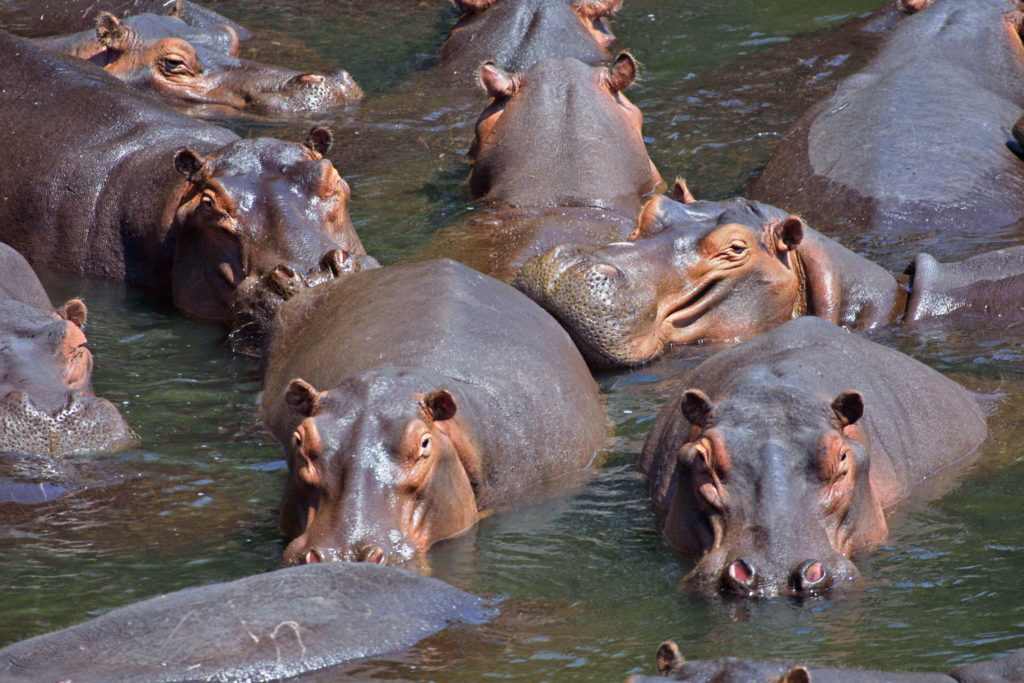
Hippos do not like being surprised
According to scientists, hippos are the most unpredictable and intelligent animals in the world – it is hard to guess how they will behave at any given moment. Worried, they become extremely dangerous – males during the mating season fight extremely fierce and bloody fights between them. Hippos living in the wild can be aggressive, especially males and females with young. Where does this behavior come from? – Hippos are typically territorial animals, when someone enters their area, they are attacked.
Due to their massive physique, these great herbivores have virtually no enemies. Even predators such as lions and hyenas avoid adult hippos from afar.
Only two representatives of the hippopotamus family have survived to this day – the common hippo and the pygmy hippo:
Nile hippopotamus
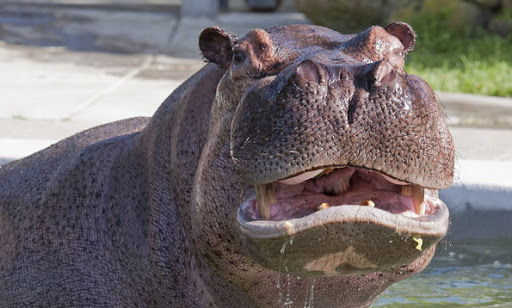
The Nile Hippo, H. a. amphibius, is native to the Nile River, stretching to Tanzania and Mozambique. Hippopotamuses are usually viewed as lazy and docile. The truth is opposite; hippos are extremely territorial animals and will fight if provoked. They can swim fast enough to make wakes in the water (30mph for spurts), but commonly they walk across the bottom of the bodies of water they live in. They love the water and even sleep underwater, naturally surfacing to breath while still asleep. Even though the Hippo can be extremely aggressive, even chasing boats or people on land, it mostly eats grasses, occasionally eating aquatic plants. Hippos of this species are growing to between 10.8 and 16.5 feet (3.3 to 5 meters) long and up to 5.2 feet (1.6 m) tall at the shoulder. The average female weighs around 3,000 lbs. (1,400 kilograms), while males weigh 3,500 to 9,920 lbs. Sexual maturity is reached at the age of 6 (females) and 7 (males). Their life expectancy is 40-50 years (the record holder is 61 years old). At short distances, they can reach speeds of up to 50 km / h. Pregnancy in females lasts 8 months. A newborn hippo weighs approximately 25 – 45 kg. Childbirth takes place in water. It is estimated that the population of this species is around 150,000.
Pygmy hippo
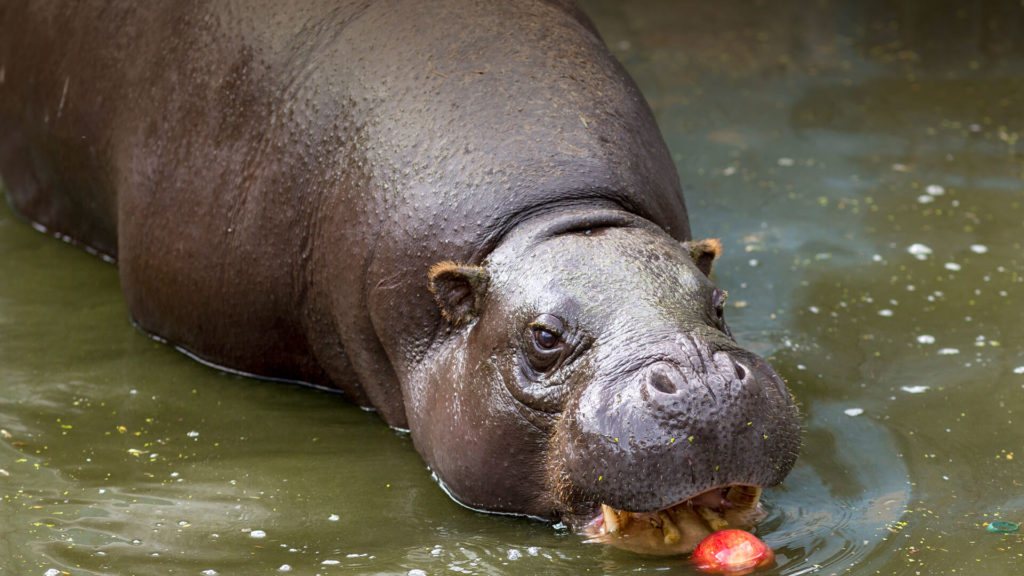
This hippo is native to the forests and swamps of West Africa, primarily in Liberia, with small populations in Sierra Leone, Guinea, and Ivory Coast. The pygmy hippo is solitary and nocturnal. The pygmy hippopotamus displays many terrestrial adaptations, but like the hippo, it is semiaquatic and relies on water to keep its skin moist and its body temperature cool. Behaviors such as mating and giving birth may occur in water or on land. Pregnancy lasts approximately 200 days. The pygmy hippo is herbivorous, feeding on ferns, broad-leaved plants, grasses, and fruits it finds in the forests. This species is much smaller. Its representatives reach (at shoulder): 2.5 to 3.0 ft. Weight: 400 to 600 lbs. Typically grows to be 3 feet tall and on average 350 pounds. Lifespan: 30 to 50 years. Hippos of this species reach sexual maturity at 5 years of age. By today it is estimates that fewer than 3,000 pygmy hippos remain in the wild.
*Fun Fact about Hippos*
- In the classification of the largest land animals in the world, the hippo ranks third. Only the elephant and the white rhino are ahead of him.
- Hippo’s milk is pink in color.
- This curiosity about hippos is not the tastiest. Young hippos (as well as elephants, pandas, and koalas) eat their mothers’ droppings.
- The hippo can open its mouth 180 degrees. Thanks to this, it can swallow a person whole. Fortunately, these animals do not eat meat.
- They must ensure proper body hydration. If their skin dries out, it just starts to crack.
- It is said that four million years ago, rats living in South America were the size of hippos.
- Despite their enormous weight, they are very agile animals.
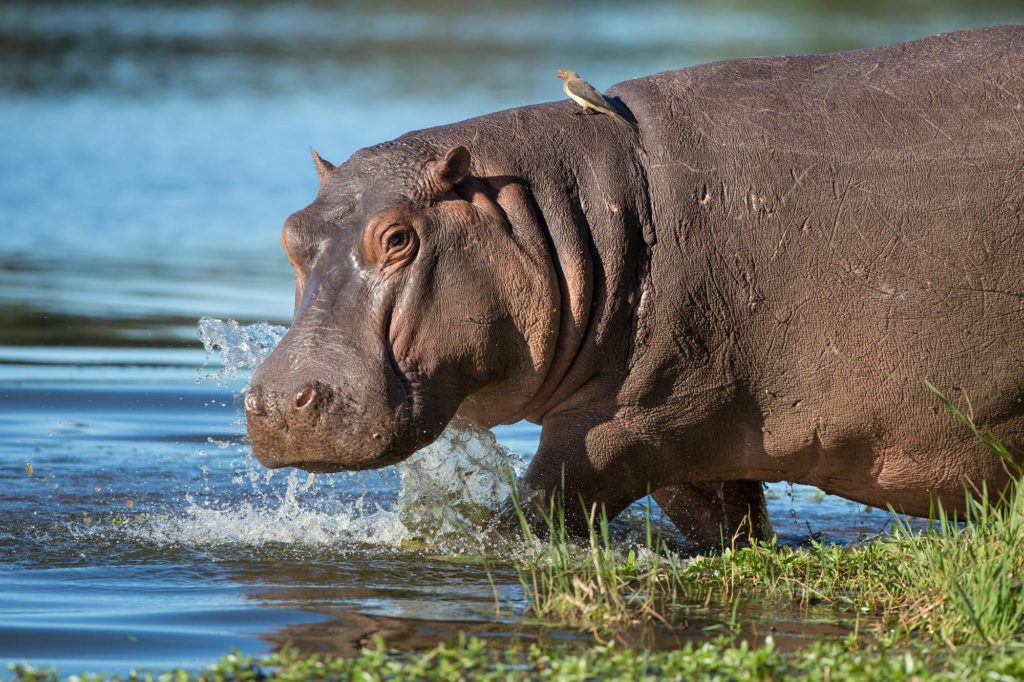
- Conscious rearing is rare in the animal world. They are shown by hippos. In case of disobedience of the young, the female will beat them with her head. When the little ones are polite, they are licked by their mother.
- The hippopotamus and the whale share a common ancestor. He lived about 60 million years ago. His fossils were found in Africa. Scientists estimate their age at 16 million years.
- They belong to herd animals. It has 10 to 40 representatives and consists of a dominant male and subordinate hippos. The male’s main task is to defend the territory.
- When watching nature videos, you can see that hippos often raise their lips. It would seem to be a yawn. It is a way of expressing a threat.
- These animals have a skin 4 cm thick. The skin alone weighs up to 1/4 of the weight of a hippo.
- A diving hippo can spend about 6 minutes underwater.
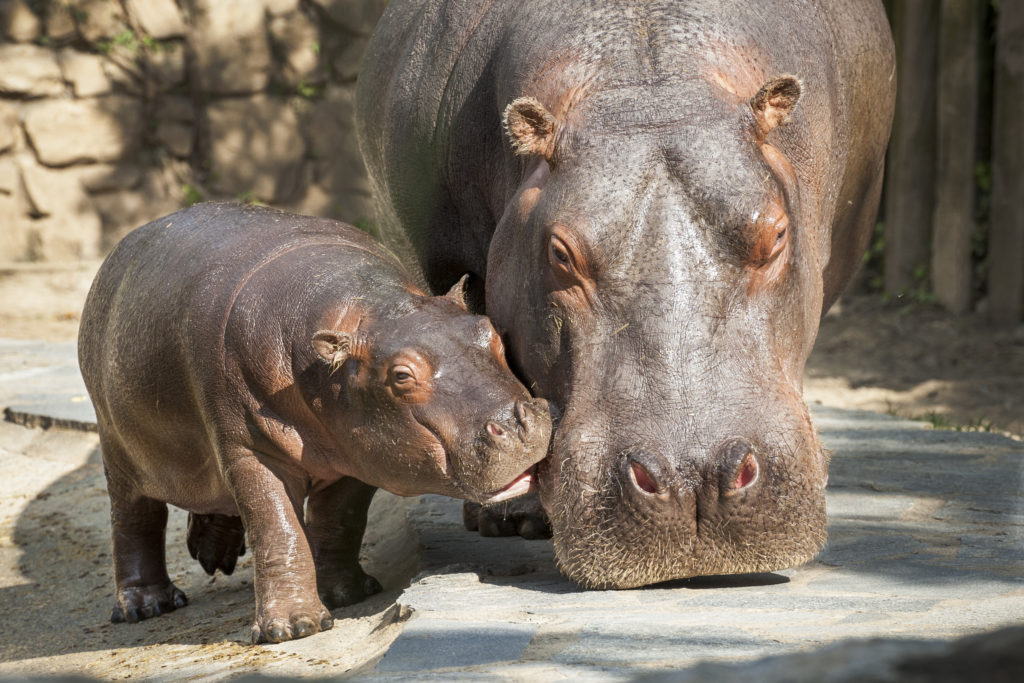
- Currently, hippos in Europe can only be found in zoos.
- Hippos are among the world’s most dangerous animals. An aggressive male can fight another hippo. In a territory fight, another individual is rarely killed. The fight ends when you prove who was stronger. He is also not afraid of crocodiles or humans. It is estimated that they kill up to 2,900 people each year. The attack is associated with the intrusion into the territory of a hippo.
- Big hipsters are big lazybones. They love to lie in the water. They usually dip their entire body to cool down the temperature.
- As hippos reach adulthood, they lose their ability to stay afloat. Older specimens usually stand in the shallows. Being in the water, they can reach speeds of up to 8 km / h.
- Hippos are active mainly at night. They spend hot days immersed in water.
- Hippo herds consist of 10 to even 40 females, led by one male.
- A female hippo gives birth to one young in water (twin pregnancy is exceedingly rare), which she then feeds for a year, also without leaving the water.
- Of land mammals, only elephants are larger than hippos.
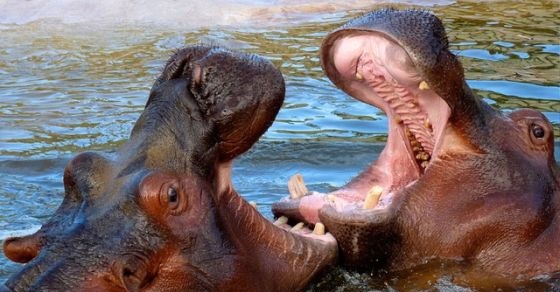
- Hippos are most closely related to whales.
- The hippo skin is almost 3 inch thick.
- This skin is extremely heavy. It is 1/4 of the total weight of a hippo.
- The oldest captive hippo was 56 years old.
- The hippo can hold its air under water for up to 6 minutes.
- Females reach sexual maturity at the age of about 7 years, and males – 5 years.
- Moments after birth, the young hippo is about 120 cm long and weighs over 30 kg.
- The length of the hippo’s teeth is up to 30 cm.
- Despite their inconspicuous appearance, hippos are one of the most dangerous animals in the world. It is estimated that hippos kill over 2,800 people each year.
- Only about 150,000 hippos live in the wild.
- Hippos pee backwards and scatter poop with their tail.
- While in deep water, the hippo most often sinks to the bottom, on which it walks.
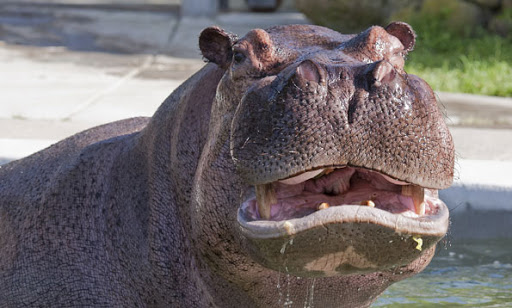
- Hippo eyes have a transparent membrane, so they can swim without any problems with their eyelids open.
- A hippopotamus can eat over 35 kg of plants for dinner.
- A hippo sticks out only its eyes while sitting in the water. Their jaws can sense even the smallest movement, thanks to which they know what is going on under the water.
- Under water, hippos make similar sounds to whales.
